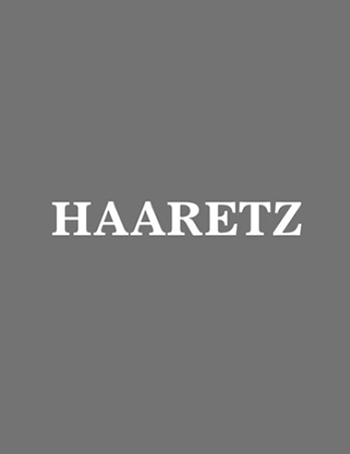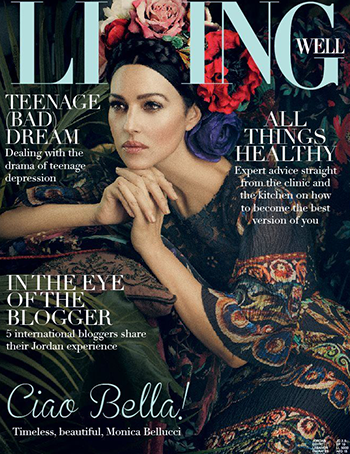
A Stitch in Time
In her book on Palestinian embroidery, an art she decribes as a 'pharmacy of the soul,' Margarita Skinner shows how certain patterns are inextricably linked to specific geographical areas.
From the standpoint of the future of the Palestinians, Margarita Skinner couldn't have found a more frustrating time to publish her book "A Treasury of Stitches: Palestinian Embroidery Motifs, 1850-1950" (Rimal/Melisende publishing). Today, as the tension between Hamas and Fatah threatens to tear the Palestinian entity apart, can embroidery patch up the holes?
But no trace of the real world seemed to penetrate the red velvet curtains of the upscale Regency Hotel in Amman, Jordan, where Skinner's book was launched two weeks ago. Among the audience were well-groomed women walking around in richly embroidered Palestinian dresses. Others wore sweaters embroidered with Palestinian designs. To these invited guests, the question of Palestine clearly transcended the vicissitudes of politics. It had nothing to do with the caprices of Ehud Olmert, or riots somewhere in the Gaza Strip. Here, Palestine had gone through a purifying crucible and become an ideal, a kind of longed-for Canaan, or Zion, to which generations of Jews prayed to return, no matter how long they had to wait, and which continued to be the object of their prayers even after they got there.
As a result, politics did not come up even once during the entire glorious evening. Nor did I manage to get even one word out of the author, a Swiss citizen who has spent her life working as a nurse in refugee camps for the International Red Cross and UNRWA (the United Nations Relief and Works Agency for Palestine Refugees in the Near East), and probably has countless Palestinian horror stories in her bag. All evening, her face was lit up with a warm smile, and she seemed akin to some kind of Mother Teresa who refuses to succumb to pessimism and believes in her gods - the gods of the needle and thread, and of the Palestinian woman's creativity.
The groundbreaking aspect of this book - and in my mind's eye, I can see certain local experts in Palestinian ethnography raising an eyebrow - is in the mapping it has done. As someone who has been interested in embroidery since childhood (Skinner, nee Scheinman, was born in the town of Schwyz, near Lucerne, from which Switzerland derived its name), she recognized the therapeutic potential of the sewing circle. Alongside the mother-and-child clinics she opened in refugee camps, Skinner established hundreds of women's embroidery clubs throughout the Middle East. At these clubs, she prodded the women to tell her the names of all the stitches, the symbolism of each pattern, and their geographical origin in old Palestine. And in so doing she put together a meticulously illustrated and annotated collection of patterns that is second to none. With it, she hoped to publish a catalog illustrating the close link between the women's place of origin and their embroidery traditions.
Palestinian dresses from Be'er Sheva and Sinai feature stylized cacti, camels and riders, scorpions and a pattern whimsically called "old man's teeth." In this region, widows used dark blue thread to stitch embroideries on their black dresses, and added red stitches when they remarried. Bead shapes and patterns known as "the candlestick" and "Hebron keys" were widespread in Gaza. Jaffa was known for its stylized flower designs, and needlework was pursued passionately in the surrounding villages, too - including Kfar Salame (today a street in South Tel Aviv), Yazur and Sarafand (now Tsrifin). A dress embroidered in Beit Dajan can be identified by a pattern of "inverted cypresses." Hebron had an embroidery style all its own, although the major embroidery hubs were Ramallah and Hebron. There is not enough space here to describe all the combinations and motifs.
Being the practical sort, Skinner does not aim for lyricism in her book. She does not delve into theories that have no solid grounding in reality. What she does say with certainty is that the revolution in Palestinian embroidery took place in the 1930s, or 1930 to be more precise, when DMC thread (short for Dollfus Mieg & Cie) arrived in Palestine. That was when the use of natural silk thread came to an end and Palestinian embroidery made the switch to DMC, a cotton thread with a shiny silk-like texture.
Along with the thread came DMC embroidery-pattern books, which exposed Palestinian women to European patterns, from swans to roosters, although Skinner says that even a generation after these books first appeared, the women were still able to point out which designs were foreign and which were local.
In her brief remarks from the podium during the book launch, the author described the Palestinian embroidery patterns she collected as a "pharmacy of the soul." But again, her tone was not at all elegiac, but practical and down-to-earth, like everything else she writes and says. With the same matter-of-factness, she knows that the era of authentic Palestinian embroidery is over, and the young Palestinian women of today are as interested in this art form as they are in the snows of yesteryear. Many machine-embroidered dresses are sold in the markets today as authentic.
A dying art
The book was written in collaboration with Widad Kawar, hailed as "Umm l'ibas al-falastin" - the "mother of Palestinian dress." Kawar owns the world's largest collection of Palestinian ethnography, which she has loaned to museums around the world. Born in Palestine, Kawar grew up in Bethlehem and attended a Quaker school in Ramallah. In 1955, while on holiday in the nearby village of Aboud, she received two traditional Palestinian dresses as a gift. These became the core of her collection and sparked her bid to preserve this dying art.
At the book launching, I met the publishers who undertook the heroic mission of publishing this expensive and presumably unprofitable book. Behind the name Rimal Publications, a publishing house run by Palestinians in exile. Rimal was represented by the women of the Shawwa family, a highly respected family from Gaza that fled to Cyprus, but continues to "rejoice" in Palestine, as one can see from the intriguing list of books put out in Nicosia under the editorship of Nora Shawwa.
Her lovely daughter, Falak Shawwa, is a photographer who photographed the Palestinian textiles in the book. I asked her to take pictures of the party for Haaretz, and she was delighted by the opportunity to publish her work in an Israeli newspaper. Her sister, who was standing behind the counter, selling books to the guests, is a faithful reader of Haaretz. (She wrote her thesis in communications on the attitude of the Israeli press to the Palestinian right of return.)
The next day, I returned from Amman by bus. On the Israeli side of the border, the friendly young customs officers opened my suitcase and turned everything inside out, closely inspecting all the contents. For every item they had some wisecrack. When they got to the book about Palestinian embroidery, they turned up their noses in disgust, but let it go, although it was "the most subversive thing" they were allowing me to bring in. "It looks innocent to you," they said, "but it could be a dangerous weapon."
Review by Benny Ziffer
Haaretz


